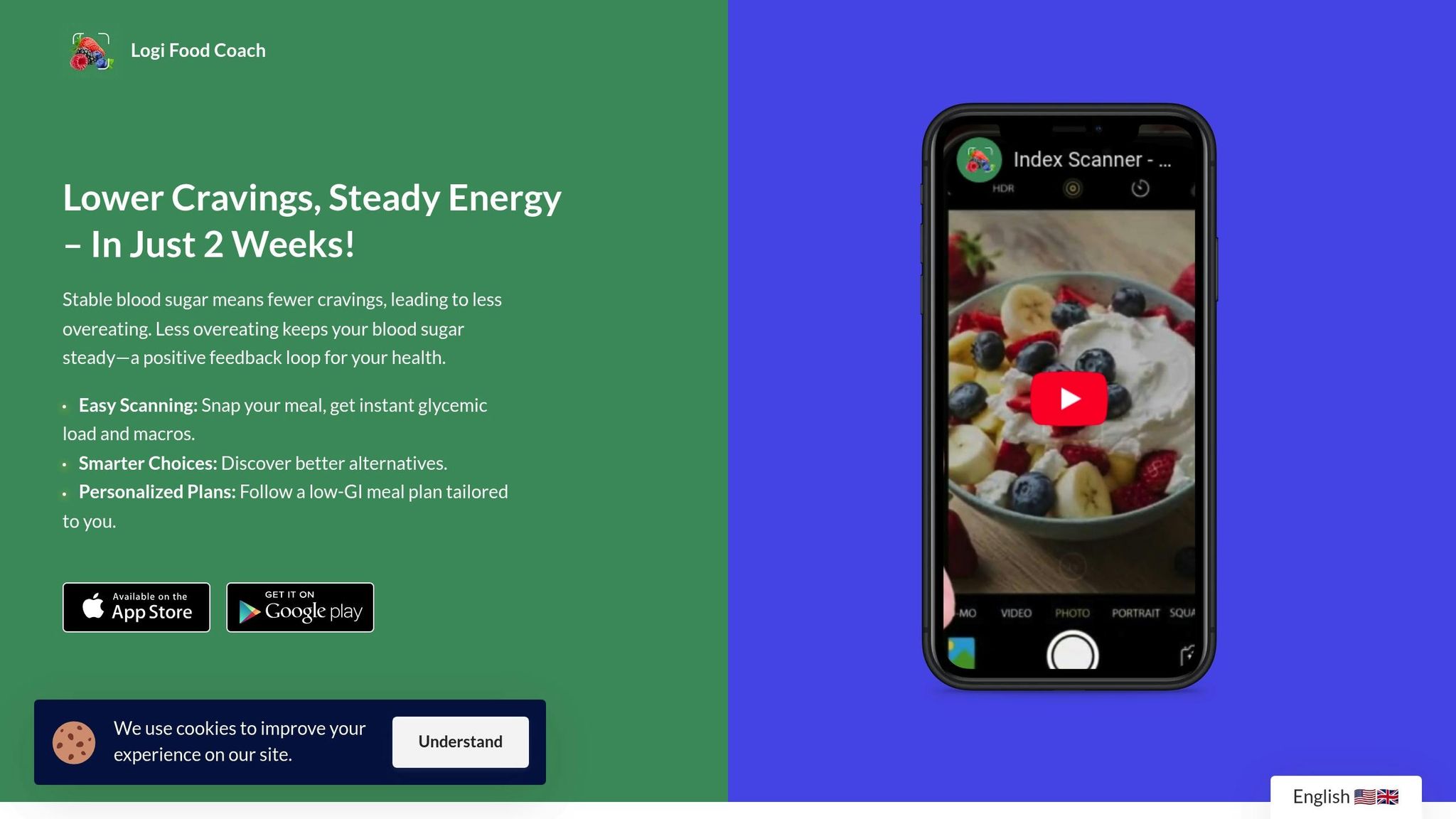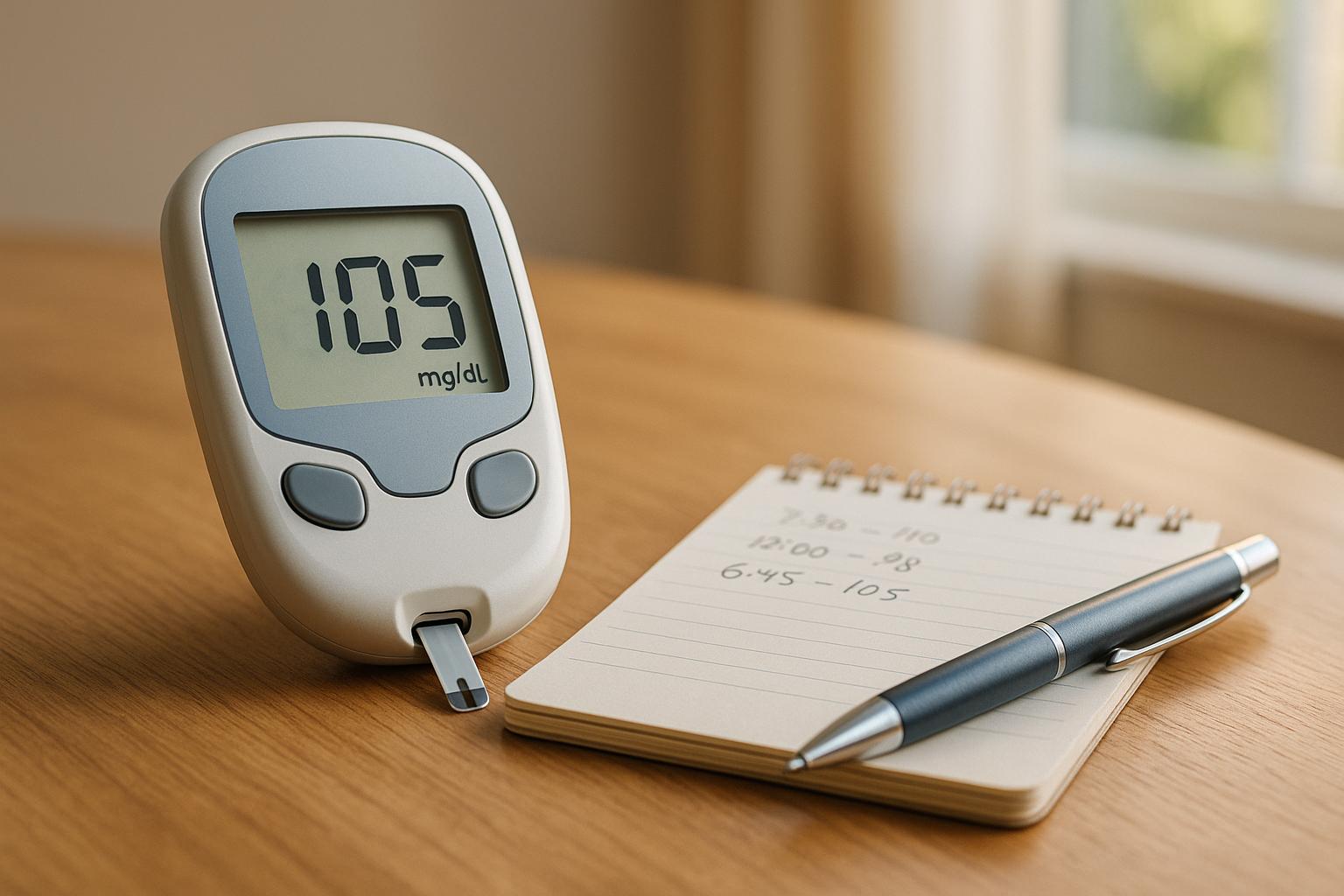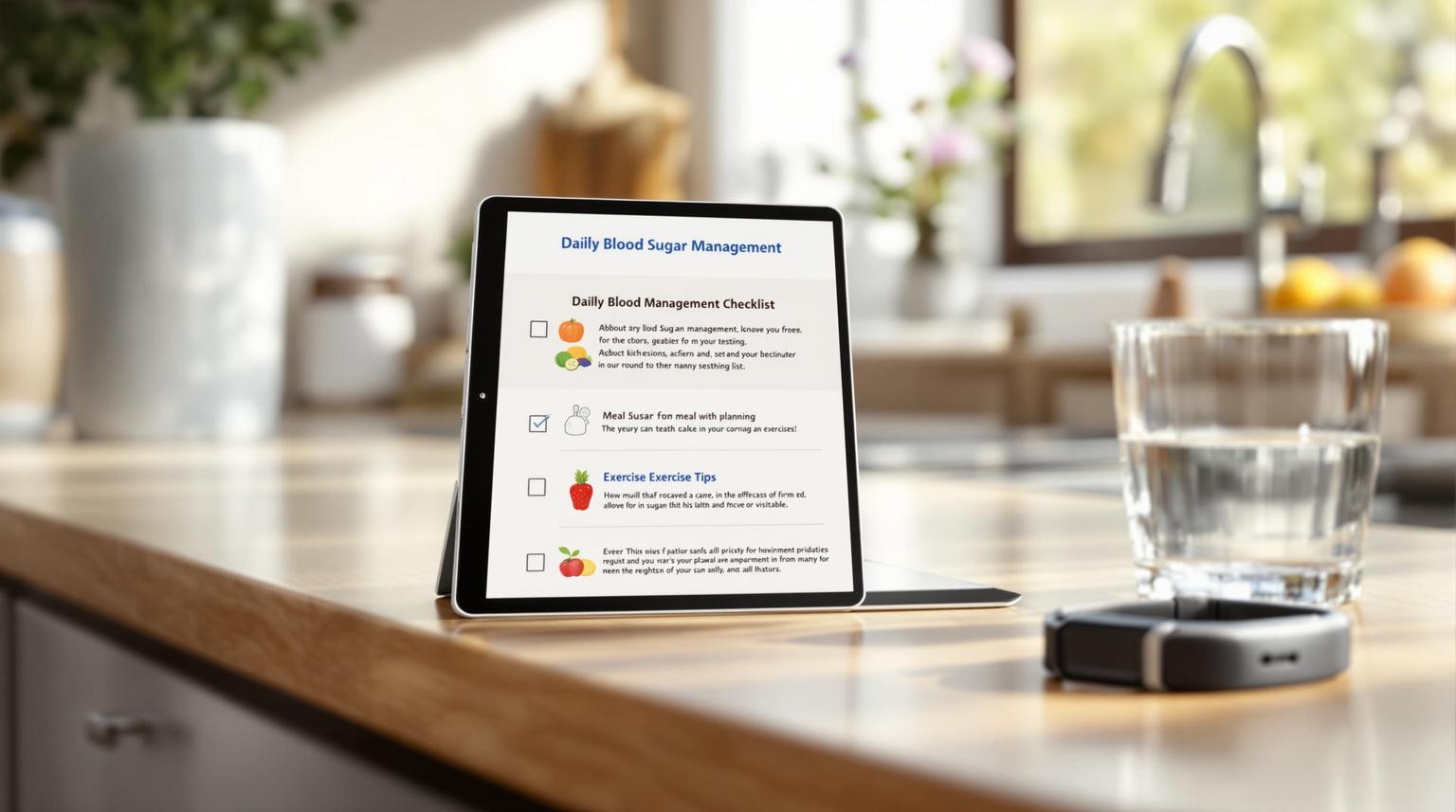The glycemic index (GI) measures how quickly foods with carbohydrates raise your blood sugar. Foods are ranked on a scale from 0 to 100, with lower numbers causing slower, steadier blood sugar increases. Here's what you need to know:
- Low GI (55 or less): Steady energy, longer satiety (e.g., lentils, steel-cut oats).
- Medium GI (56–69): Moderate blood sugar rise.
- High GI (70+): Quick spikes, followed by energy crashes (e.g., white bread, instant rice).
Why it matters:
Choosing low GI foods can help manage blood sugar, reduce hunger, and support energy levels. Pairing carbs with proteins, fats, or fiber, and using methods like cooking pasta al dente, can lower a food's GI.
Glycemic Load (GL): Combines GI with portion size to reflect a food's real impact. For example:
- Watermelon (GI: 72) has a low GL (6) due to its low carb content.
- A baked potato (GI: 85) has a high GL (31) because it's carb-heavy.
Tracking tools like the Logi app can calculate GI and GL for meals, suggest alternatives, and help you monitor blood sugar trends effectively.
Blood Sugar Response to GI Foods
High and Low GI Foods Compared
Foods with different glycemic index (GI) values affect blood sugar in distinct ways. High GI foods (70 or above) lead to quick blood sugar spikes, often followed by energy dips. For example, white bread (GI: 75) and instant rice (GI: 87) cause a noticeable rise in blood sugar within 15–30 minutes of consumption.
On the other hand, low GI foods (55 or below), such as steel-cut oats (GI: 52) or lentils (GI: 32), result in a slower, more gradual increase in blood sugar. This steady rise helps maintain energy levels for 2–3 hours, avoiding the sharp drops that can lead to fatigue and hunger.
| Blood Sugar Response | High GI Foods | Low GI Foods |
|---|---|---|
| Initial Response | Spike within 15-30 minutes | Gradual rise over 1-2 hours |
| Duration | Short-lived energy (1-2 hours) | Sustained energy (2-3 hours) |
| Recovery Pattern | Sharp decline ("crash") | Gentle decrease |
| Hunger Effects | Earlier return of hunger | Extended satiety |
These patterns highlight how the GI of foods can influence energy and hunger levels.
What Changes a Food's GI
Several factors can influence a food's glycemic index, altering how it affects blood sugar:
Processing and Cooking Methods
- Foods cooked longer tend to have a higher GI.
- Finely milled grains raise GI compared to whole grains.
- Overcooking pasta breaks down resistant starches, increasing its GI.
Food Structure
- Fiber slows digestion, lowering GI.
- Whole, intact grains have a lower GI than processed versions.
- Vegetables with intact cell walls release glucose more slowly.
Meal Composition
- Healthy fats slow carbohydrate absorption.
- Protein helps reduce the overall blood sugar response.
- Acidic ingredients, such as vinegar or lemon juice, can lower a meal's GI.
For example, cooking pasta al dente keeps its GI lower than when it's overcooked, and adding olive oil to bread can reduce its glycemic impact. These small adjustments can make a big difference in managing blood sugar effectively.
Managing Blood Sugar with GI
Understanding Glycemic Load
Glycemic Load (GL) combines the Glycemic Index (GI) with the amount of carbohydrates in a serving to estimate how a food affects blood sugar levels.
The formula is:
GL = (GI × grams of carbs per serving) ÷ 100
For example:
- Watermelon has a GI of 72, but its low carb content (8g per 100g) results in a GL of just 6.
- A medium baked potato, with a GI of 85 and 37g of carbs, has a much higher GL of 31.
| GL Range | Impact on Blood Sugar | Examples |
|---|---|---|
| Low (≤10) | Minimal effect | 1 cup of strawberries (GL: 3) |
| Medium (11-19) | Moderate effect | 1 cup of cooked quinoa (GL: 13) |
| High (≥20) | Significant increase | 1 large bagel (GL: 38) |
Now, let’s explore how meal timing and composition can further help manage blood sugar.
Nutrition Beyond GI
GI and GL are helpful, but they’re even more effective when combined with balanced nutrition.
Meal Timing and Composition
- Space meals about 3–4 hours apart to maintain steady blood sugar levels.
- Pair carbohydrates with protein, healthy fats, and fiber to slow digestion and reduce spikes.
- Adding fiber-rich vegetables to your meals can lower the overall glycemic impact.
Portion Control Tips
- Use smaller plates to naturally reduce portion sizes.
- Follow the plate method: fill half your plate with non-starchy vegetables, one-quarter with protein, and one-quarter with complex carbohydrates.
- Measure portions until you can accurately estimate them by sight.
For added support, consider using tools like the Logi app. Its meal scanner can instantly calculate the GL of your meals, and the tracking features help you identify how different foods affect your blood sugar. Since individual responses can vary, tracking your unique patterns is key to finding what works best for you.
The Dietary Glycemic Index: Everything You Need to Know
sbb-itb-0899721
GI and GL Tracking Methods
Tracking how food impacts blood sugar is now easier thanks to modern tools. Digital platforms can calculate Glycemic Index (GI) and Glycemic Load (GL) values, helping users make informed dietary choices. One such tool is the Logi app, which incorporates these capabilities.
Features of Logi App

Meal Scanner Technology
This feature allows the app to analyze meal data and instantly calculate GL. Forget manual math - users receive immediate feedback on how their meals may affect blood sugar.
Daily Tracking and Insights
The Logi app offers several tools to help users stay on top of their nutrition and health:
| Feature | Benefit |
|---|---|
| Meal Logger | Keeps track of nutritional intake |
| Health Insights | Breaks down each meal’s effect on blood sugar |
| Alternative Finder | Suggests lower GI food substitutions |
| Progress Tracking | Monitors glycemic trends over time |
A 2024 study of 200 Logi app users revealed that consistent meal tracking over three months led to a 15% reduction in post-meal blood sugar spikes, confirmed through continuous glucose monitoring [1].
Smart Food Alternatives
The app also recommends lower-GL alternatives to high-glycemic foods. It provides nutritional comparisons and adjusts portion sizes to help reduce the glycemic impact of meals.
These tools empower users to make better food choices, improving their understanding of how meals affect blood sugar. Over time, this can support healthier, more sustainable habits.
[1] Source: Logi internal user data, 2024
Summary
Here's a quick recap: understanding the concepts of Glycemic Index (GI) and Glycemic Load (GL) can help you manage blood sugar levels more effectively. Regular monitoring supports steady blood sugar and consistent energy throughout the day.
Main Takeaways
The connection between GI, GL, and blood sugar control can be summed up in these key points:
| Aspect | Impact | Action Step |
|---|---|---|
| Glycemic Load | Offers a more complete view of food's effect on blood sugar | Calculate GL for meals to make smarter dietary choices |
| Daily Tracking | Uncovers eating patterns influencing blood sugar | Keep a meal log to identify trends |
| Food Alternatives | Encourages inclusion of lower GI options | Opt for healthier, lower GI foods |
| Digital Tools | Makes tracking and decisions easier | Try the Logi - Glycemic Index Tracker App for meal scanning and GL monitoring |
Managing blood sugar successfully involves balancing both the quality (GI) and quantity (GL) of carbohydrates. With modern tools like the Logi app, it's easier than ever to track your glycemic response, adjust your diet, and make informed food choices.
Use tools to scan meals, track consistently, and opt for lower GI foods to maintain healthy blood sugar levels.
FAQs
How can I include low glycemic index foods in my diet to keep my energy levels steady?
To keep your energy levels steady, try adding more low glycemic index (GI) foods to your meals. These foods help prevent blood sugar spikes and provide longer-lasting energy. Focus on whole grains, legumes, non-starchy vegetables, and fruits like berries or apples.
Using tools like the Logi app can make this easier. It helps you scan meals for their glycemic load, track your eating habits, and find healthier low GI food alternatives. By planning meals with these tools, you can better manage your blood sugar and maintain consistent energy throughout the day.
How can I lower the glycemic index of high-GI foods when cooking or preparing meals?
To reduce the glycemic index (GI) of high-GI foods, you can make a few simple adjustments during cooking or meal preparation. Here are some practical tips:
- Pair with protein or healthy fats: Adding foods like chicken, fish, eggs, nuts, or avocado can slow down the absorption of carbohydrates, lowering the overall GI of the meal.
- Incorporate fiber-rich ingredients: Include vegetables, legumes, or whole grains to increase fiber content, which helps moderate blood sugar spikes.
- Cook foods minimally: Overcooking foods like pasta or rice can increase their GI. Opt for al dente textures instead.
- Choose whole, unprocessed options: Swap refined grains (like white bread) for whole-grain alternatives, which naturally have a lower GI.
Making these changes can help you better manage your blood sugar levels and maintain steady energy throughout the day.
What’s the difference between Glycemic Index and Glycemic Load, and why should both matter for managing blood sugar?
The Glycemic Index (GI) measures how quickly a carbohydrate-containing food raises blood sugar levels, while the Glycemic Load (GL) factors in both the GI and the amount of carbohydrates in a typical serving. This makes GL a more practical tool for understanding the real impact of a food on blood sugar.
Considering both GI and GL is important because a food with a high GI might have a low GL if eaten in small portions, and vice versa. By focusing on both, you can make more informed decisions about portion sizes and food choices to better manage your blood sugar and energy levels.


